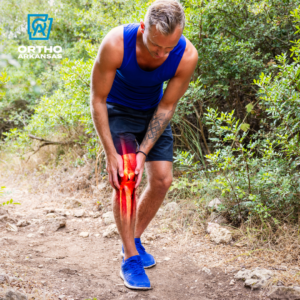It’s true: the only way back to a full recovery after orthopedic surgery is through a physical therapist.
Stick to the program. There are consequences to not following the physical therapy program that is routinely prescribed for post-surgical rehabilitation and serious juries.
There are a number of reasons why an individual skips physical therapy appointments. The fear of pain is commonly why many neglect this aspect of recovery, as is an unclear expectation of physical therapy in the healing process.
Many patients think that physical therapy aids only their post-op recovery, but PT is the key to maintaining mobility long after being released from care. Physical therapy restores lost function and trains the body to move as it did before the surgery or injury.
Physical Therapy leads to better outcomes and mobility.
Not only can it help you heal faster, improve range of motion and minimize scar tissue development, PT may also help you manage pain levels with less prescription medications.
Benefits of Physical Therapy
What do patients have to gain by sticking with physical therapy after a surgery? A lot, actually.
Less pain.
Pain is to be expected after an orthopedic surgery, and prescription medication to manage pain is routinely prescribed for a short period. However, physical therapists can help patients with pain for the long-term without narcotics. Physical therapists utilize a variety of options for patients to manage pain, including application of heat/ice, electrical stimulation and massage.
Promotes healing.
The normal weakness that patients experience post-surgery can become permanent without PT. Physical Therapy is an evidence-based treatment, proven to promote healing by rebuilding that lost muscle strength.
More flexibility and mobility.
Surgery on its own doesn’t restore flexibility and mobility — it only addresses the underlying condition. Physical therapists are trained to help patients restore lost joint mobility and regain overall flexibility. One important focus of PT is correcting poor posture that is a common result of compensating for movement problems caused by the condition or injury.
Quicker overall recovery.
Every patient wants to heal as fast as possible after a surgery and dedication to physical therapy is how that is achieved. A physical therapist’s services restore lost function and retrain the body to operate as it did before the injury or surgery. They also help patients to relax and use their muscles properly, which in turn promotes healing. With the aid of an experienced physical therapist, patients in general have an overall quicker recovery.













